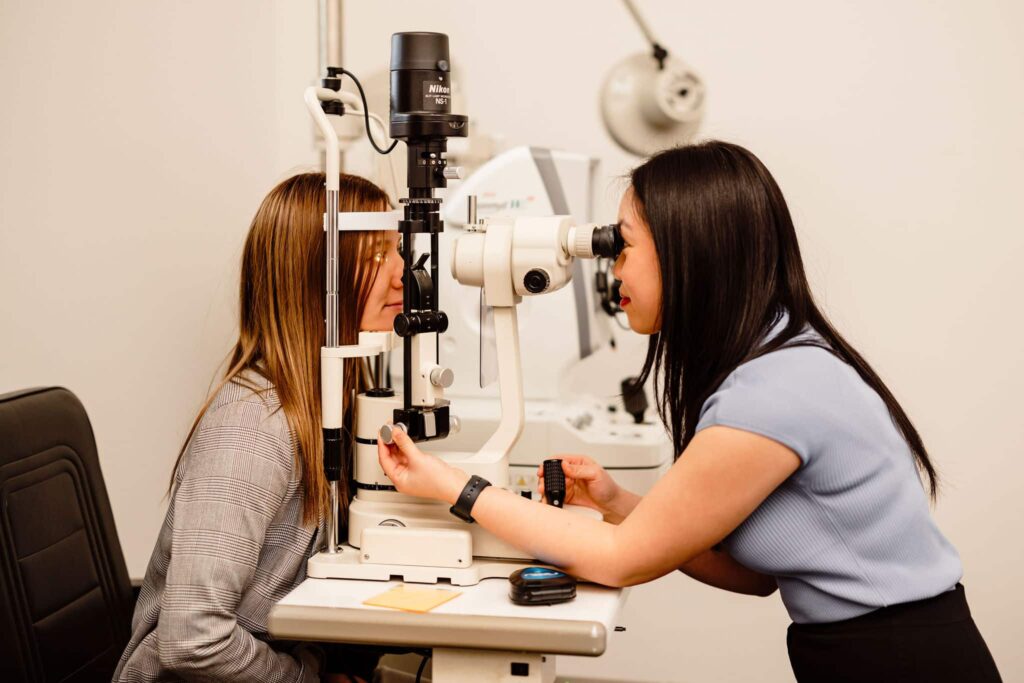Cataract surgery is a common procedure that can significantly improve the quality of life for those suffering from vision impairment due to cataracts. In Australia, bulk billing is a system that allows eligible patients to receive medical services without any out-of-pocket expenses. Understanding who qualifies for bulk billed cataract surgery and how the process works is essential for those considering this treatment option.
Understanding Cataracts
Cataracts occur when the lens of the eye becomes cloudy, leading to blurred vision and, in severe cases, blindness. They are often age-related but can also result from other factors such as diabetes, prolonged use of corticosteroids, or eye injuries. Symptoms may include difficulty seeing at night, sensitivity to glare, and colours appearing faded.
Bulk billed cataract surgery provides an accessible option for many Australians suffering from cataracts. Understanding the eligibility criteria and the process involved can empower patients to seek the care they need without financial stress.
As cataracts progress, they can severely impact daily activities, making timely intervention crucial. Fortunately, cataract surgery is a straightforward procedure that can restore vision effectively.

In addition to the common age-related cataracts, there are several other types worth noting. Congenital cataracts, for instance, can develop in infants and children, often due to genetic factors or maternal infections during pregnancy. These cataracts may not always affect vision immediately but can lead to significant visual impairment if not monitored and treated appropriately. Furthermore, traumatic cataracts can occur following an eye injury, where the lens becomes cloudy as a direct result of the trauma. This highlights the importance of eye protection in sports and other high-risk activities.
Moreover, the impact of cataracts extends beyond mere vision impairment; it can also affect an individual’s quality of life. Those suffering from cataracts may find themselves avoiding social situations or activities they once enjoyed due to the challenges posed by their vision. This can lead to feelings of isolation and depression. Therefore, regular eye examinations are essential, particularly for older adults, as early detection and intervention can significantly mitigate these emotional and social consequences.
What is Bulk Billing?
Bulk billing is a payment option under the Medicare system in Australia, allowing patients to receive medical services without upfront costs. When a healthcare provider bulk bills, they accept the Medicare benefit as full payment for their services, meaning patients do not have to pay anything out of pocket.
This system is particularly beneficial for those who may face financial barriers to accessing necessary medical care. It ensures that essential treatments, including cataract surgery, are accessible to a broader segment of the population. By alleviating the financial burden associated with medical expenses, bulk billing plays a crucial role in promoting public health and encouraging individuals to seek timely medical attention, which can lead to better health outcomes overall. Learn more about population at https://www.washington.edu/populationhealth/about/what-is-population-health/
How Bulk Billing Works
When a patient is eligible for bulk billing, the healthcare provider will submit a claim directly to Medicare on their behalf. The patient simply needs to present their Medicare card at the time of the appointment. If the service is bulk billed, there will be no charge for the patient.
It’s important to note that not all medical services are bulk billed, and availability can vary by provider. Therefore, it is advisable for patients to confirm with their healthcare provider whether the specific service they require is eligible for bulk billing. Additionally, some providers may choose to offer bulk billing selectively, often based on the patient’s circumstances or the type of service being rendered. This means that while a patient might find bulk billing available for a general consultation, they may need to pay out-of-pocket for specialised services or treatments, which can sometimes lead to confusion. Understanding the nuances of bulk billing is essential for patients to navigate their healthcare options effectively.
Who Qualifies for Bulk Billed Cataract Surgery?
Eligibility for bulk billed cataract surgery primarily depends on a few key factors, including age, medical necessity, and the healthcare provider’s policies. Below are the primary criteria that determine qualification.
Age and Medicare Eligibility
In Australia, individuals aged 65 and over are generally eligible for bulk billed cataract surgery under Medicare. However, younger patients with specific medical conditions may also qualify. For instance, those with diabetes or other health issues that contribute to cataract formation may be considered for bulk billing.
It is essential for patients to have a valid Medicare card, as this is a requirement for accessing bulk billed services. Those without Medicare coverage will need to explore other payment options. Additionally, it is worth noting that the age threshold for eligibility may vary slightly depending on the specific circumstances of the patient’s health, and some practitioners may advocate for earlier intervention if they believe it will significantly enhance the patient’s quality of life.
Medical Necessity
To qualify for bulk billed cataract surgery, the procedure must be deemed medically necessary. This typically involves an assessment by an ophthalmologist, who will evaluate the severity of the cataract and its impact on the patient’s vision and daily activities.
Patients may be required to undergo a comprehensive eye examination, which will help the ophthalmologist determine the appropriate course of action. If the cataract is significantly affecting the patient’s quality of life, surgery is likely to be recommended. Furthermore, it is important to understand that the assessment process may also include discussions about the patient’s lifestyle and how vision impairment is influencing their daily tasks, such as reading, driving, or even recognising faces, which can provide a more holistic view of the necessity for surgery.
Healthcare Provider Policies
While Medicare sets the guidelines for bulk billing, individual healthcare providers may have their own policies regarding eligibility. Some surgeons and clinics may choose to bulk bill only certain patients or under specific circumstances, while others may not offer bulk billing at all.
It is advisable for patients to inquire directly with their chosen healthcare provider about their bulk billing policies and whether they qualify for the service. Additionally, patients should be aware that waiting times for surgery can vary significantly between different providers, and those who are eligible for bulk billing may find that certain clinics have longer waiting lists due to higher demand for subsidised services. Understanding these dynamics can help patients make informed decisions about where to seek treatment and prepare for the potential timeline of their surgical journey.
The Process of Bulk Billed Cataract Surgery
The journey to undergoing bulk billed cataract surgery involves several steps, from the initial consultation to the post-operative follow-up. Understanding this process can help alleviate any concerns and prepare patients for what to expect.
Initial Consultation
The first step is to schedule an appointment with an ophthalmologist. During this initial consultation, the doctor will perform a thorough eye examination to assess the cataract’s severity and its impact on vision. This may include vision tests, eye pressure measurements, and retinal examinations.
Based on the findings, the ophthalmologist will discuss the potential need for surgery and explain the benefits and risks involved. If surgery is recommended, the doctor will provide details about the procedure and address any questions the patient may have.
It is not uncommon for patients to feel anxious during this stage, and it is perfectly acceptable to express any concerns to the ophthalmologist. Many clinics offer resources to help patients understand their condition better, including brochures and informational videos. Additionally, patients may be encouraged to bring a family member or friend to the consultation for support and to help remember the information discussed.

Preparing for Surgery
Once the decision for surgery is made, patients will receive instructions on how to prepare. This may include guidelines on medications, dietary restrictions, and any necessary pre-operative tests. Patients should inform their doctor of any medications they are currently taking, as some may need to be adjusted prior to surgery.
It is also advisable for patients to arrange for someone to accompany them on the day of the surgery, as they may experience temporary vision impairment following the procedure. Furthermore, patients should consider preparing their home for recovery; this might involve setting up a comfortable resting area, ensuring that essential items are within easy reach, and removing any potential hazards that could lead to falls or accidents during the initial recovery phase.
The Surgical Procedure
Cataract surgery is typically performed as an outpatient procedure, meaning patients can return home the same day. The surgery usually takes about 30 minutes to an hour and is performed under local anaesthesia, with sedation if necessary.
During the procedure, the cloudy lens is removed and replaced with an artificial intraocular lens (IOL). This lens helps restore clear vision. Most patients experience significant improvement in their vision shortly after the surgery, although full recovery may take a few weeks. It is worth noting that the type of IOL chosen can vary based on the patient’s specific vision needs and lifestyle, with options available for those who may also require correction for astigmatism or presbyopia. Patients are encouraged to discuss these options with their ophthalmologist to ensure the best possible outcome for their individual circumstances.
Post-Operative Care and Follow-Up
After the surgery, patients will be given specific instructions for post-operative care to ensure a smooth recovery. This may include using prescribed eye drops, avoiding strenuous activities, and attending follow-up appointments.
Recovery Period
The recovery period after cataract surgery is generally quick, with many patients noticing improved vision within a day or two. However, some may experience mild discomfort, such as itching or a gritty sensation in the eye. These symptoms are typically temporary and can be managed with prescribed medications. Click here to find more about discomfort.
Patients are advised to avoid rubbing their eyes and to wear sunglasses outdoors to protect their eyes from bright light. It is also essential to attend all follow-up appointments to monitor healing and address any concerns.
Long-Term Outcomes
Most patients achieve excellent long-term outcomes following cataract surgery, with many reporting significant improvements in their quality of life. Vision is often restored to levels that allow for normal daily activities, such as reading, driving, and enjoying hobbies.
Regular eye examinations are crucial even after surgery, as cataracts can develop in the remaining lens over time. Staying vigilant about eye health can help maintain clear vision for years to come.
Conclusion
For those experiencing vision problems due to cataracts, consulting with an ophthalmologist is the first step towards regaining clarity and improving overall quality of life. With the right support and information, patients can navigate the journey of cataract surgery with confidence.
In summary, bulk billed cataract surgery is a viable option for eligible patients, ensuring that necessary medical care is accessible to all. By understanding the qualifications and the surgical process, individuals can make informed decisions about their eye health and take proactive steps towards clearer vision.
Learn more on: How to Manage Your Budget for Cataract Surgery Cost Sydney

